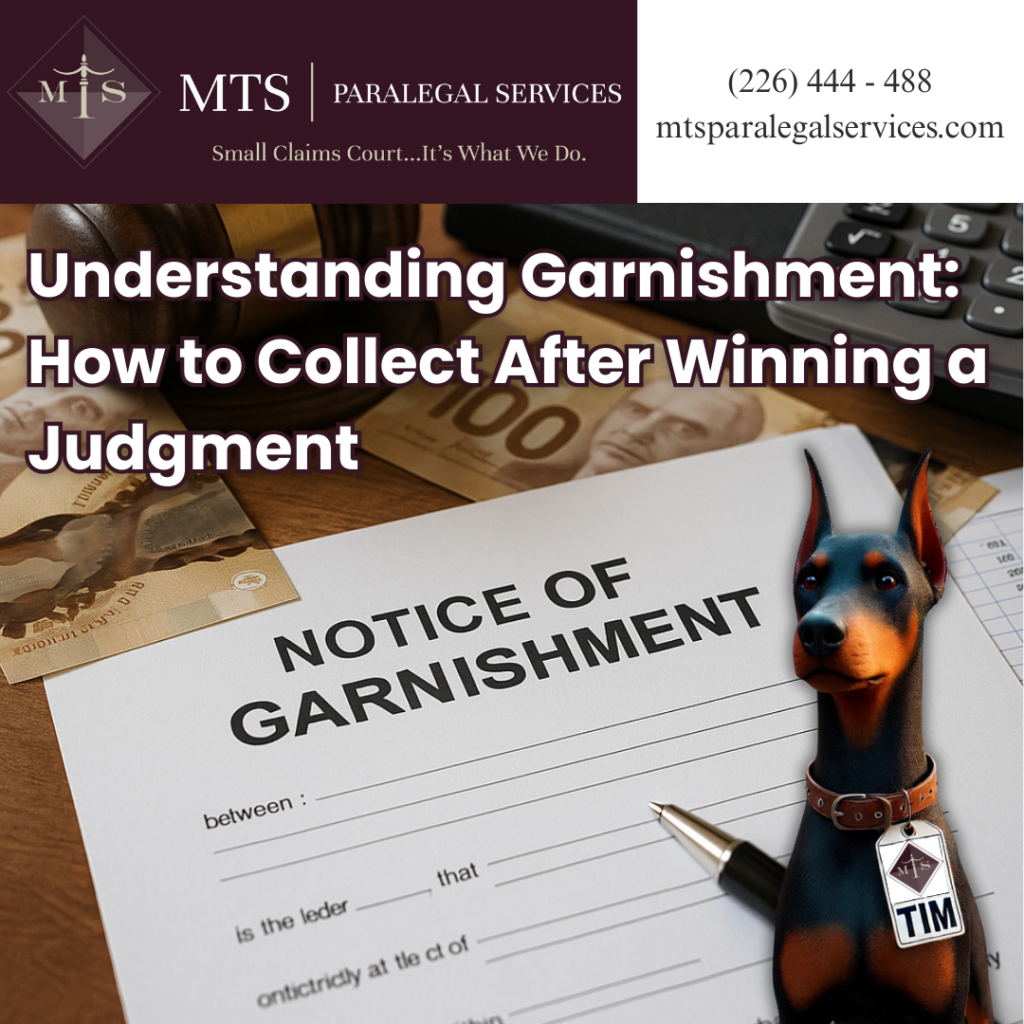
Understanding Garnishment: How to Collect After Winning a Judgment
Winning a judgment in Small Claims Court or another Ontario court is only part of the legal journey. After judgment is granted in your favour, the next step is enforcing that judgment — and one of the most effective methods is garnishment. At MTS Paralegal Services, Tim understands the complexities involved in judgment enforcement and are here to guide you through the garnishment process professionally and efficiently.
What Is Garnishment?
Garnishment is a legal procedure by which a portion of a debtor’s wages or bank account funds can be seized to satisfy a judgment debt. In Ontario, garnishment is governed by the Rules of the Small Claims Court and Ontario’s Courts of Justice Act. This remedy allows a creditor — the party owed money — to collect directly from a third party (such as an employer or a bank) that holds funds belonging to the debtor.
When Can You Garnish?
Before initiating garnishment, you must have a final judgment or court order stating the amount owed. Once this is in hand, and the debtor has failed to voluntarily satisfy the debt, you can proceed to file a Notice of Garnishment with the court. This legal notice informs the garnishee (the third party) of their obligation to forward funds to the court, which are then paid to you as the creditor.
Types of Garnishment
There are typically two types of garnishment used in Ontario:
- Wage Garnishment: A portion of the debtor’s income is deducted from their paycheque by their employer.
- Bank Garnishment: Funds are seized directly from the debtor’s bank account.
It is important to note that there are limits on how much can be garnished. Under the Wages Act, only up to 20% of a debtor’s net wages may be garnished (this may be higher in certain cases such as child support). For bank accounts, funds are generally garnished up to the amount of the judgment plus court costs and interest.
Filing a Notice of Garnishment
To begin the garnishment process, you must:
- File a Notice of Garnishment with the court that issued the judgment.
- Pay a filing fee.
- Serve the garnishee and the debtor with the appropriate documents.
- Await compliance from the garnishee, who must respond within 10 days.
Funds collected are held in trust by the court and forwarded to the creditor on a periodic basis. If the garnishee fails to comply, they may face legal consequences, including being liable for the full debt amount.
Challenges and Considerations
Garnishment can be highly effective, but it is not always straightforward. Common complications include:
- The debtor changing employers or banks
- Insufficient funds or income
- Debtors being self-employed, making wage garnishment more difficult
These situations require experience and knowledge of enforcement options. At MTS Paralegal Services, we assess each case carefully and provide tailored legal solutions to improve your chances of recovering what is owed.
If you’ve won a judgment but are struggling to collect, garnishment might be your best option. Enforcement requires precision, timing, and a thorough understanding of Ontario law. Call Tim at MTS Paralegal Services at (226) 444-4882 to discuss how garnishment can help you collect what you’re owed. You don’t have to navigate this process alone — we’re here to help.
This content does not constitute legal advice. For up-to-date guidance or legal advice specific to your situation, please contact MTS Paralegal Services or call (226) 444-4882.
